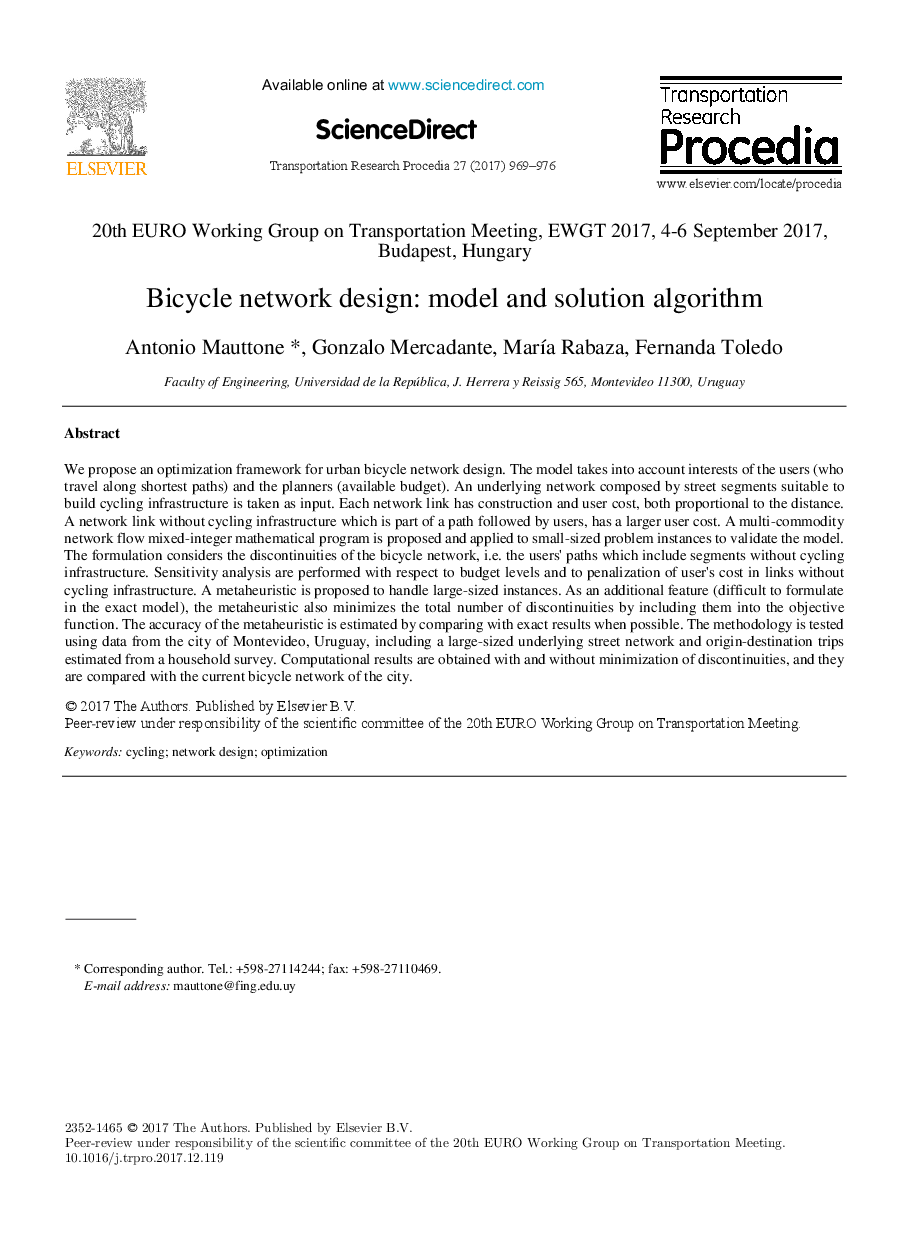ترجمه فارسی عنوان مقاله
طراحی شبکه دوچرخه: الگوریتم مدل و راه حل
عنوان انگلیسی
Bicycle network design: model and solution algorithm
| کد مقاله | سال انتشار | تعداد صفحات مقاله انگلیسی |
|---|---|---|
| 159593 | 2017 | 8 صفحه PDF |
منبع

Publisher : Elsevier - Science Direct (الزویر - ساینس دایرکت)
Journal : Transportation Research Procedia, Volume 27, 2017, Pages 969-976
ترجمه کلمات کلیدی
دوچرخه سواری، طراحی شبکه، بهینه سازی،
کلمات کلیدی انگلیسی
cycling; network design; optimization;

